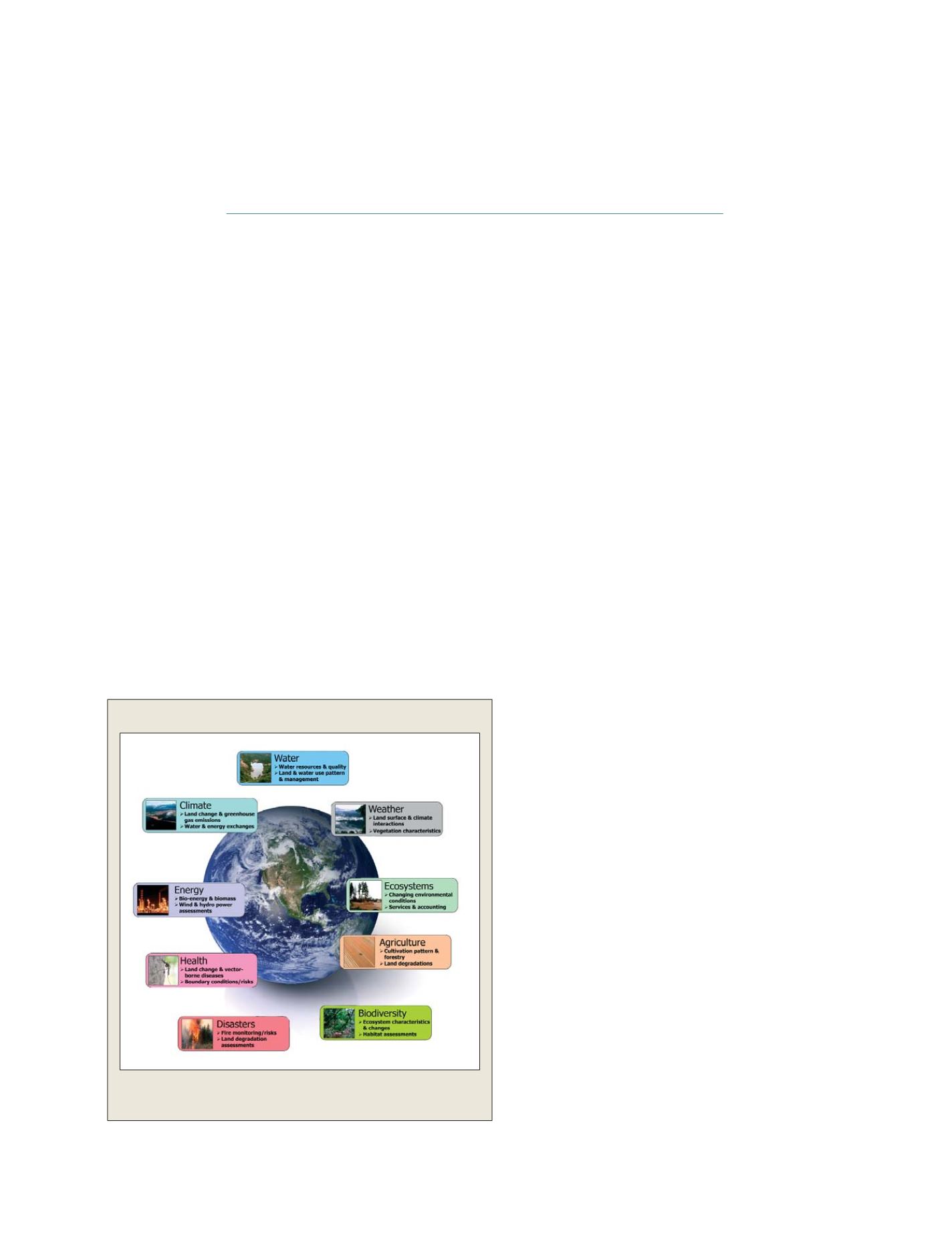

[
] 235
Global land cover observations
Martin Herold, Global Observation of Forest and Land Cover Dynamics (GOFC-GOLD)
I
n its ten-year reference document,
1
the Group on Earth
Observation (GEO) has highlighted the importance of land cover
for all areas of societal benefits. Land cover is one of the most
important elements for the description and study of the environment.
Reliable land cover observations are of crucial importance to under-
standing climate change and mitigating its impacts; to sustainable
development, natural resources management, conserving biodiver-
sity and understanding ecosystems and biogeochemical cycling.
Land cover change is an issue with far reaching policy implications, inter-
nationally, nationally and locally. For example, land cover characteristics
can indicate the ongoing processes of deforestation, desertification, urban-
ization, loss of biodiversity and ecosystem functions, and changing
boundary conditions for vector-borne diseases and water and energy
management. In situ and satellite-based land observation efforts across
disciplines (e.g. geography, ecology, geology, forestry, land policy and plan-
ning) use and refer to land cover as the most obvious and detectable
indicator of land surface characteristics.
Despite their importance, it is important to recognize that land obser-
vations are not operational in comparison to other earth observation
domains, such as oceans and atmosphere. The arena of land cover obser-
vations is heterogeneous in many ways – in terms of the
land surface itself, the approaches to acquire land cover data,
and the users of such information. Each land surface world-
wide has been mapped and characterized several times and
a large number of countries have a monitoring system in
place, including forest, agriculture and cartographic infor-
mation systems and inventories.
With the evolution of satellite-based observations, it has
become straightforward to produce land cover maps with a
reasonable amount of effort and little difficulty. To build a
sustained global land cover observing system, however,
requires international agreement and cooperation on the
continuity of global observations, the consistency in
mapping and monitoring specifications and land cover
assessment approaches, and sustained engagement and
participation inmapping activities, regional networking and
capacity building.
A role for GEO
The international land cover community has been working
withGEO since 2005 to build the foundations for land cover
observations as an integral part of the Global Earth
Observation Systemof Systems (GEOSS). Given the current
heterogeneity and lack of coordinated land cover observa-
tions globally, GEO has offered a platform for improvement
and has been driving observation progress, through:
• Highlighting the societal needs and relevance of land cover
observations
• Providing a forum for advocating global land cover and
change observations as key issues
• Fostering integrated perspectives for continuity and
consistency of land observations, in particular for joint
international efforts to provide baseline observations and
data suitable to assess global land cover and change
• Helping to evolve and apply international standards for
land cover characterization and validation
• Advocating joint participation in ongoing global mapping
activities, as well as regional networking and capacity
building in developing countries
• Helping to develop international partnerships involving
producers, users and the scientific community to better
produce and use existing datasets.
A specific task in the GEO2007-2009work plan (DA-07-02)
is dedicated to ‘global land cover’. The overall goal is to
provide a suite of global land cover datasets, initially based
on improved and validated moderate resolution land cover
maps and eventually including land cover change at high
resolution.
Key land cover observations
GEO SBA’s key land cover observation needs the multitude of benefits
from continuous and consistent global land cover observations
Source: M. Herold, GOFC-GOLD
S
OCIETAL
B
ENEFIT
A
REAS
– E
COSYSTEMS
















